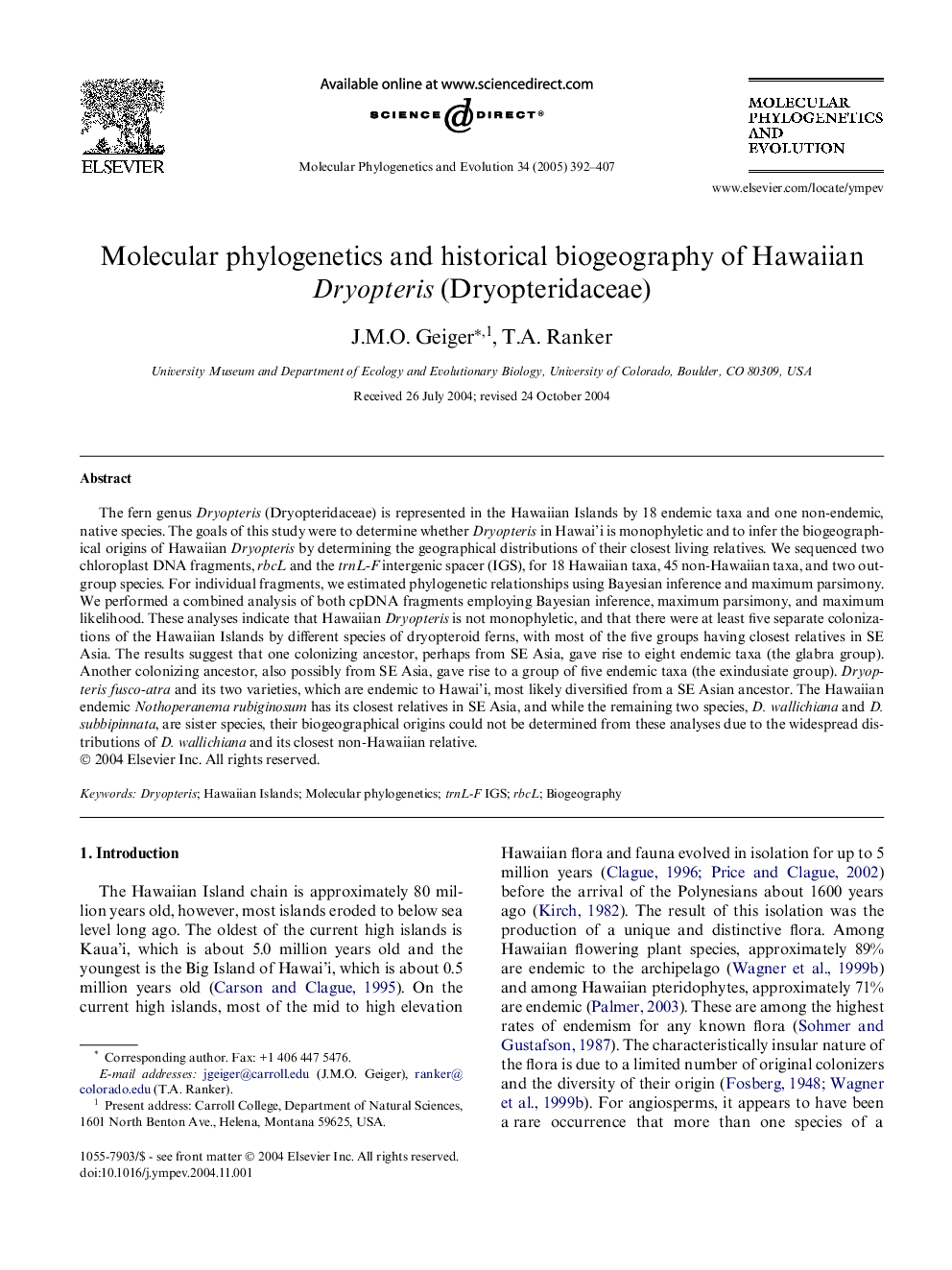| Article ID | Journal | Published Year | Pages | File Type |
|---|---|---|---|---|
| 9143274 | Molecular Phylogenetics and Evolution | 2005 | 16 Pages |
Abstract
The fern genus Dryopteris (Dryopteridaceae) is represented in the Hawaiian Islands by 18 endemic taxa and one non-endemic, native species. The goals of this study were to determine whether Dryopteris in Hawai'i is monophyletic and to infer the biogeographical origins of Hawaiian Dryopteris by determining the geographical distributions of their closest living relatives. We sequenced two chloroplast DNA fragments, rbcL and the trnL-F intergenic spacer (IGS), for 18 Hawaiian taxa, 45 non-Hawaiian taxa, and two outgroup species. For individual fragments, we estimated phylogenetic relationships using Bayesian inference and maximum parsimony. We performed a combined analysis of both cpDNA fragments employing Bayesian inference, maximum parsimony, and maximum likelihood. These analyses indicate that Hawaiian Dryopteris is not monophyletic, and that there were at least five separate colonizations of the Hawaiian Islands by different species of dryopteroid ferns, with most of the five groups having closest relatives in SE Asia. The results suggest that one colonizing ancestor, perhaps from SE Asia, gave rise to eight endemic taxa (the glabra group). Another colonizing ancestor, also possibly from SE Asia, gave rise to a group of five endemic taxa (the exindusiate group). Dryopteris fusco-atra and its two varieties, which are endemic to Hawai'i, most likely diversified from a SE Asian ancestor. The Hawaiian endemic Nothoperanema rubiginosum has its closest relatives in SE Asia, and while the remaining two species, D. wallichiana and D. subbipinnata, are sister species, their biogeographical origins could not be determined from these analyses due to the widespread distributions of D. wallichiana and its closest non-Hawaiian relative.
Related Topics
Life Sciences
Agricultural and Biological Sciences
Ecology, Evolution, Behavior and Systematics
Authors
J.M.O. Geiger, T.A. Ranker,
